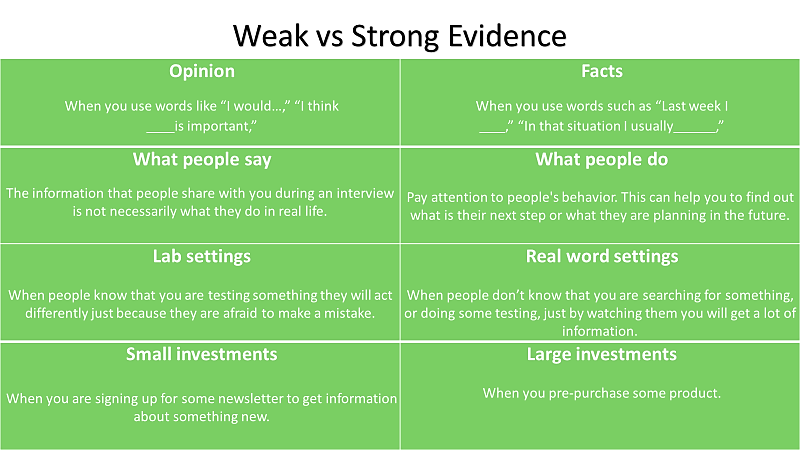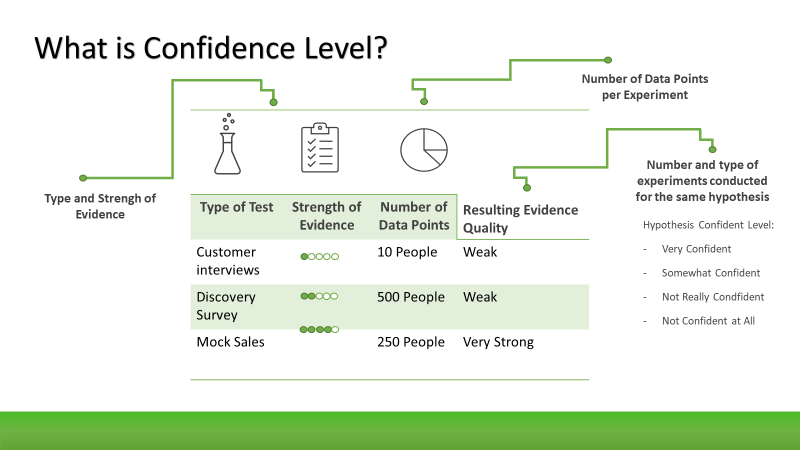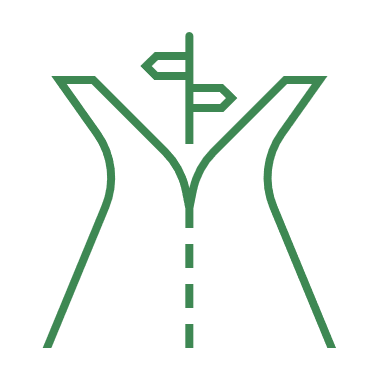Content begins here
Contenido de la página principal
Pulsa para colapsar
Learn and Decide
To learn how to do something you have to be dedicated. Learning is an important factor in your progress, so we will focus on learning and acquiring new knowledge. And when you want to make a good decision, you probably use your knowledge. Let’s start by learning new things. In this lesson, we will learn what is evidence, what is the difference between weak and strong evidence, what are insights, what is the confidence level, and how learning is related to decision making.
What is the evidence?
Evidence is anything that can be used to prove something, and what you can use to support or disprove your hypothesis. How can you make the difference between weak and strong evidence?

Always have in your mind that different experiments create different evidence.
What are Insights?
Insights are everything you have learned:
- from studying evidence,
- about confirming hypotheses,
- about discovering new directions etc.
What is Confidence Level?
The level of confidence is how much you believe your evidence is strong enough to support or disprove your hypothesis (Testing Business Ideas, 2019).

There are three dimensions that can help you to find your confidence level (Testing Business Ideas, 2019):
- Type and strength of evidence - The type of evidence you have collected for a particular hypothesis will affect how confident you are.
- A number of data points per experiment - The more data you have, the better. When you have a lot of data, it means that you have something to work with.
- Number and type of experiments conducted for the same hypothesis - Your confidence level should increase with the number of experiments that you have done on some hypothesis.
Hypothesis Confident Level (Testing Business Ideas, 2019):
- Very Confident - If you did several experiments of which at least one is a call to action that produces very strong evidence.
- Somewhat Confident - If you did several experiments that produce strong evidence of a particularly strong call to action experiment.
- Not Really Confident - If you did only interviews or surveys in which people say what they will do. You need to know that they might have different behaviors in the real world.
- Not Confident at All - If you did only one experiment that produced weak evidence, such as an interview.
Decide
When you want to make a decision, utilize everything that you learn, and put that knowledge into action. Make a decision to change, give up, or continue testing your idea.

Decide which path is the right one.
Conclusion
Now that we have learned what experiments are, how to distinguish between weak and strong evidence, what insights are, and the level of confidence of the hypothesis, we can apply that knowledge to real examples and make a good decision about business ideas.
Video and PDF presentationPulsa para colapsar
The following video explains the content of this lesson and shows some examples:
Video T3.L3. Learn and Decide
Here you have the content of the video in pdf in case you need to use it in your classroom:
Lesson contents in PDFPulsa para colapsar
Here you have the contents of the lesson in PDF:

